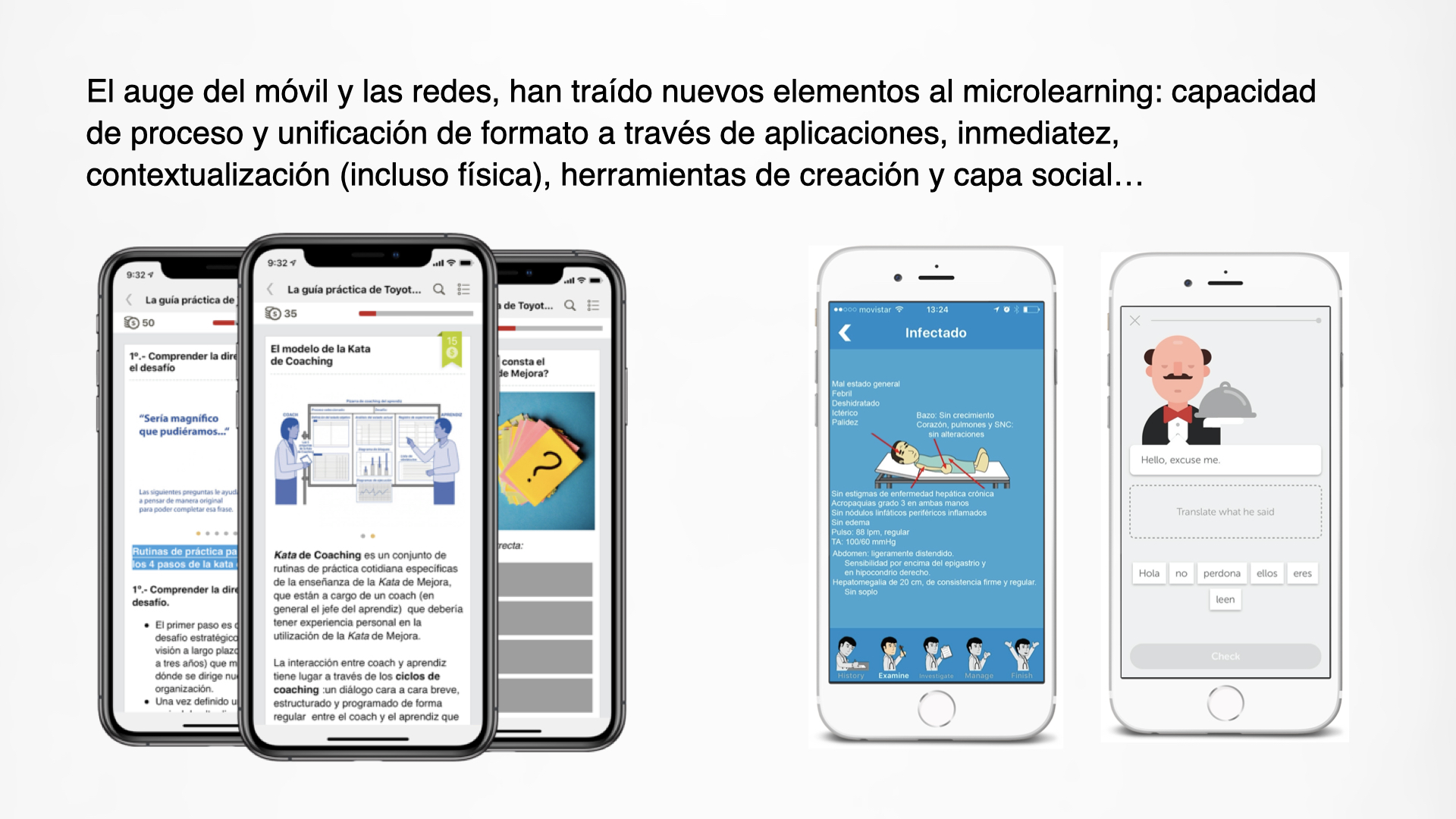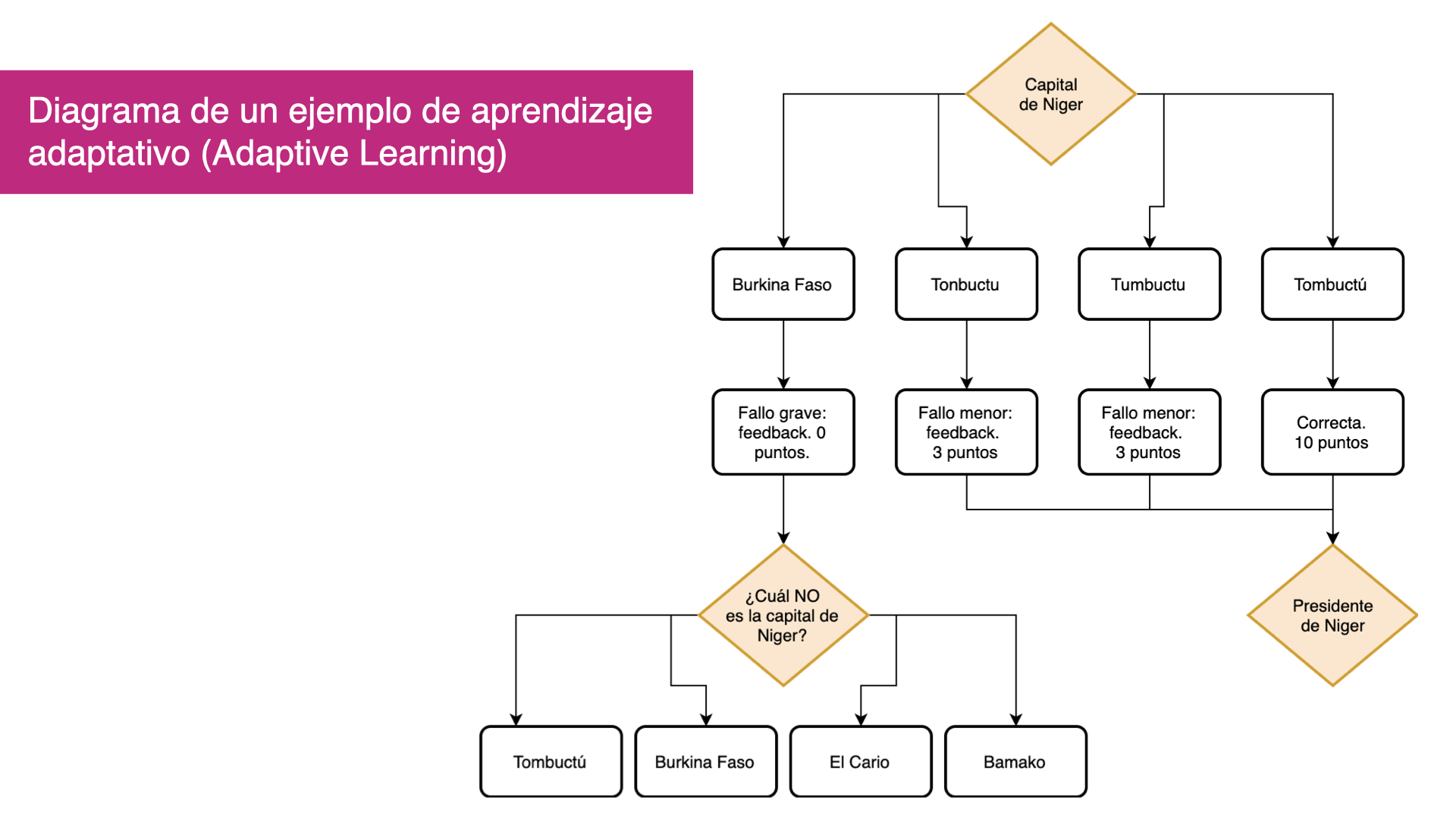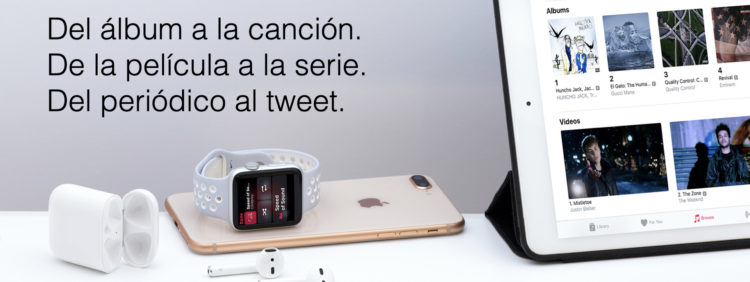What Is Microlearning? What Are Microcontents? How Do I Use Them?
Microlearning is a methodology that has been with us for many years, but it has taken on a greater relevance due to the rise of mobile devices, social media, and data analysis. In this article and the presentation at the end of it, we will help you answer the most common questions about microlearning and its application.
What Is Microlearning? Why Does It Work?
Microlearning is designing a training dynamic by keeping in mind the use of small impacts with a sequence, interaction and mechanics that help consolidate learning. This methodology is based on a series of characteristics that make it an ideal solution for many learning processes:
- Concentrates on the focus of attention
- Decreases consumption/interaction time
- It’s easier to assimilate
- Allows to combine content and elements, enabling modular interactions
- Specifically designed for use on mobile devices
- Contextual, both in terms of content and geographic location

Microlearning / Microcontents Characteristics
- Microcontent has to transmit specific knowledge, and if possible, by itself.
- Focus on a specific topic.
- It covers a specific objective or need.
- The core of information as the focus (avoids what is superfluous).
- Easy to share/transmit/combine.
- It is multiformat and often, multichannel.
- It has an important visual weight: images, videos, audios, etc.
Microlearning needs a channel, dynamics, and structures
When we talk about microlearning, we must take into account, on one hand, the microcontent itself, and on the other hand, the channel (which makes microlearning possible) and the dynamics associated to the channel.
Elements that we usually find in a microlearning channel:
- Grouping by topics
- Browsing/structure. Navigation map or thematic classification
- Gamification dynamics.
- Self-creating contents
- Social layer (exploration and co-creation dynamics)
- Continuous self-assessment
- Feedback
- Adaptive Learning
- Data analytics (feedback)

How Long Does Microlearning Last?
In the case of a microcontent, the maximum duration of it should be up to 10 to 15 minutes, the usual duration of it being 3 to 5 minutes.
Microlearning is understood to be a short-term unitary set of resources, grouped in a didactic sequence and with control dynamics, feedback, evaluation, repetition, etc.
This is where the question of effective and efficient time commitment arises. We believe that a microtraining should have an average duration of between 1 and 3 hours.
How Can I Design a Microlearning Project?
Here are 10 basic tips to design a better microlearning project:
- Design short concepts. If possible, in self-explanatory contents.
- Convey useful and applicable knowledge.
- Make it visual. Videos and diagrams are very powerful and combined with other reading formats, they help consolidate knowledge. If you can also add interactive elements, all the better.
- Thought-provoking. Challenge your user to take some action.
- Can I check it in the subway? Can I read/watch it in 5 minutes?
- Intersperse questions/surveys or interactive activities. It is important that the user is attentive and that they can evaluate their knowledge and receive feedback on it.
- Adapt the contents to the user’s context.
- The content has to be clear and concise, avoiding superfluous elements.
- Play with the content order and sequence. Try sequential or random content depending on the goal.
- Make sure there is constant evaluation and feedback.
If you are interested in learning more about microlearning, here is a presentation that summarizes the key concepts.
If you want to go deeper:
 |
 |






2 Comments
The Microlearning Paradox: When Less Is More - Snackson
[…] Qué es el microlearning, en qué se fundamenta y posibles aplicaciones. […]
Content is the key (microlearning) - Snackson
[…] success lies both in its technical conceptualization and its approach to contents. In the case of microlearning, the impact is clearer: media determines the type of content to […]